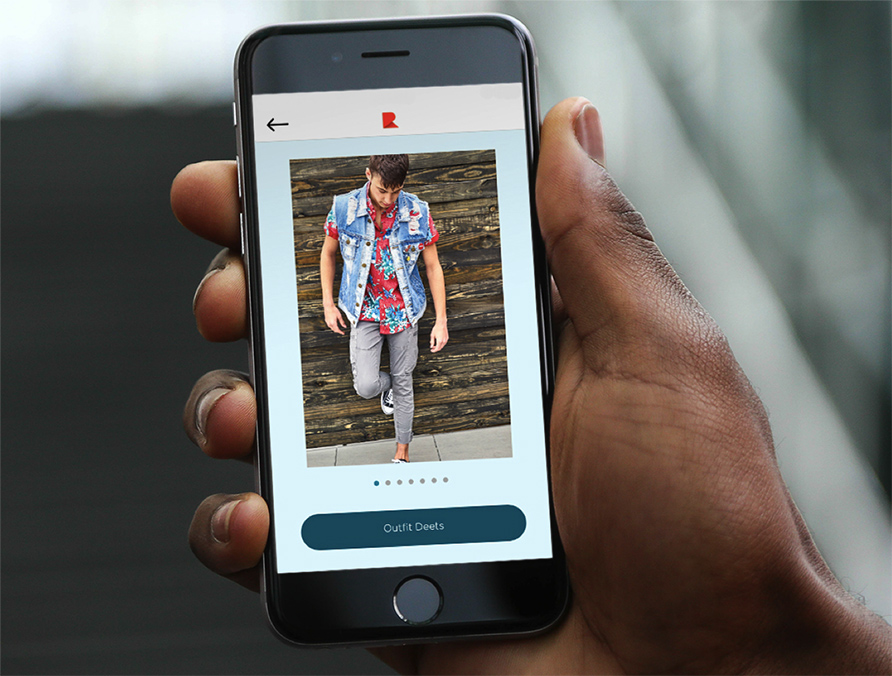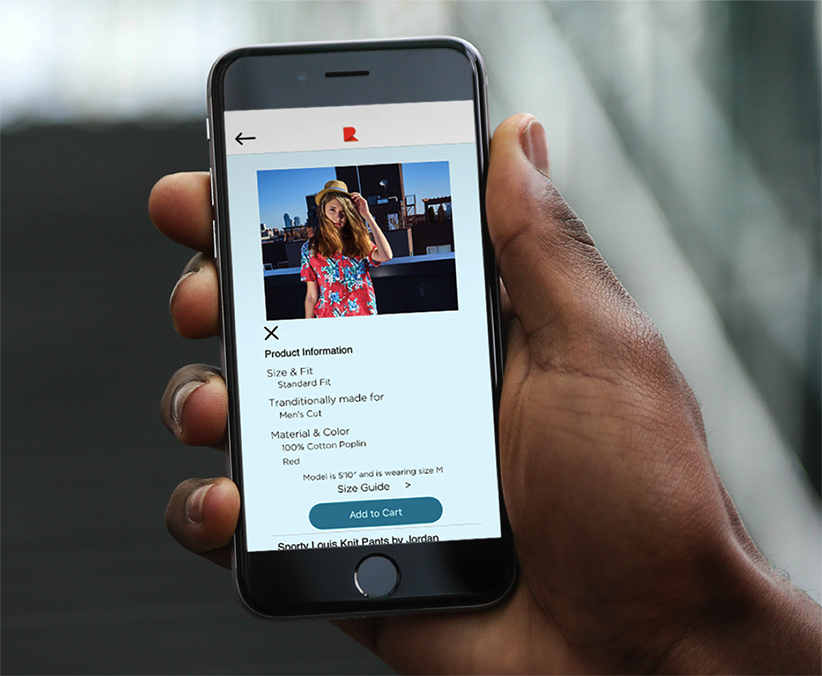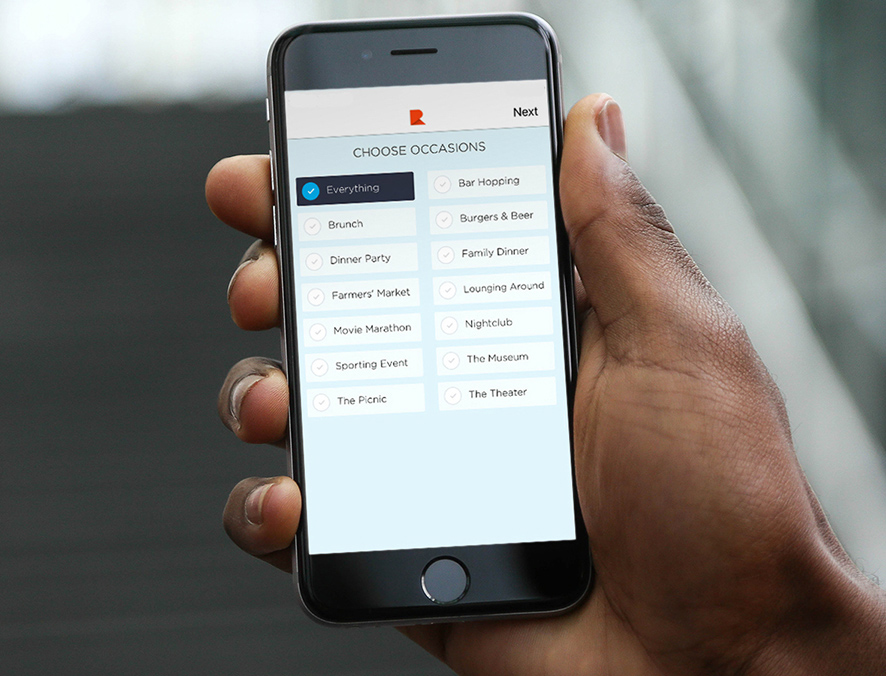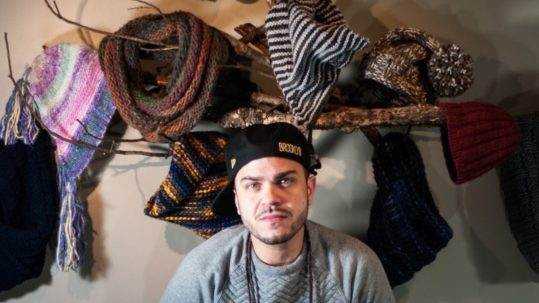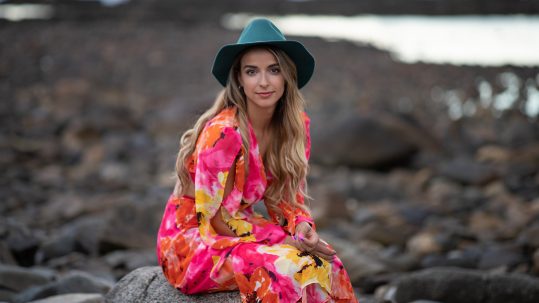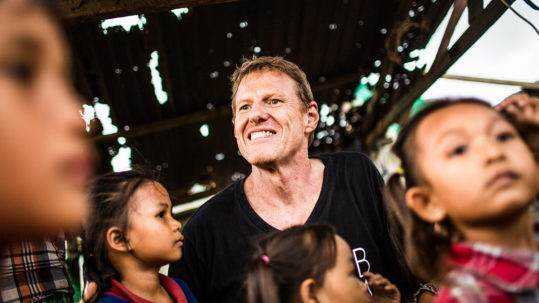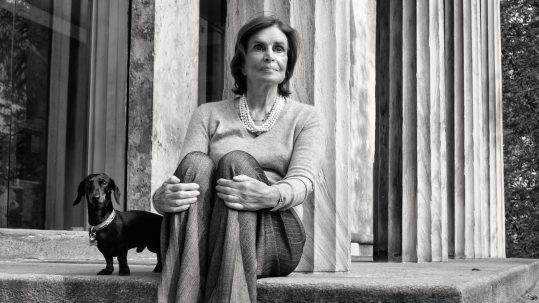
29 Jan RIGit
Photo: Alexander Spacher.
RIGit
Get ready for RIGit, the very first genderless shopping app ever created, that lets you express the most authentic version of yourself through fashion. RIGit is April Mellas and Amy Bender, two women with no true commonalities, who had a common desire to make the world a better place. RIGit is not just a pioneer app that is revolutionizing our shopping experience, RIGit is a movement!
By Victoria Adelaide | JAN 29. 2018
Victoria Adelaide: RIGit?
Amy Bender: When we came up with this idea of genderless shopping, we wanted a name that transcended the experience of shopping because we feel that the mission of this app goes beyond just clothes. It’s this habit that we have of assigning gender to inanimate objects. We say cocktails have gender, sunglasses have gender, jewellery has gender, but then we also say, ‘They don’t, these are objects’. By assigning gender we are loading these objects with so many stereotypes, and our mission is to do away with that. Thinking of a name, it needed to transcend shopping, it needed to be crisp and sharp and easy to remember, so we were playing around with lots of ideas. April was shooting different ideas at me all the time. To rig a ship is to outfit a ship and we came up with this idea of using rigging so we chose RIGit, because that’s what we’re doing; we’re outfitting you, whatever you are, whoever you are, however you’re identify.
Victoria Adelaide: How did it all start; how did you meet?
April Mellas: Amy and I met years before we came up with the idea of a genderless shopping app, we actually met working together. That story is a funny one. I was working in a non profit and Amy was brought in to run a project. I was in my second month at this non profit and they just threw us together; they said, ‘You are going to work with this person on this project – go!’. And ever since, we worked on a number of other projects together; we were very very successful together. We are opposites in every way, you can see it visually but also inside, personality-wise, Amy is very rational, research-oriented, methodical and thoughtful, and I’m a little bit more irrational, less patient, a bit more the type who would just jump off a bridge and then find the net on the way down. I don’t care if I can see it or not, whereas she wants to make sure it’s there 75 times before she moves forward. And that balance allowed us to create amazing success together because Amy brought me down a little bit and I brought her up a little bit. Friendship built from that because we had so much respect for each other’ way of working, of communicating and of developing projects together; it was just remarkable. People would literally stop us on the street and tell us what a phenomenal thing we did. So then Amy and I would have lunches together after the projects were over, play tennis, hang out as friends. Because it’s hard to work 15-16 hours a day, and not eventually talk about something personal and develop a personal relationship. So we did. And let me backtrack for a second; I used to go shopping and I would call Amy on the phone if she couldn’t come with me and I would say, ‘Just stay on the phone because I’m in the men’s department and I don’t want them to talk to me because it’s always so awkward when they ask me, are you shopping for your father, or your brother, or your boyfriend?’ Or they ask,‘Are you a boy?’ I’m confused. It was just so awkward and it was the same thing in the women’s department, so I always insisted that she stay on the phone with me. And so one day we were just talking about shopping and I was telling her how annoying it is and how she should just come shopping with me all the time so I wouldn’t get interrogated, and she could field the questions. This is so weird, we both shop online; Amy does a lot more online shopping than I do and we thought there has to be an app where you can shop for clothes that’s not about gender, that’s beyond gender. And there wasn’t. We sat at lunch for two and a half hours; we downloaded almost every app but we couldn’t find any, and before you even get to the products, every single app has questions like, ‘Are you shopping for women or men?’. So we thought to ourselves, ‘What?’; we just didn’t understand and I looked at Amy, and I just said, ‘Let’s do that’. Even though we don’t have an entrepreneurial background, we know that we work very well together, and that if we want something bad enough, our skillset and our determination can make us successful. It took Amy a little while to get on board, she wanted a month to do the research but once she had that time and with a lot of persistence on my part I will admit, I convinced her that we should do this. And I think at the core, that’s who we are as a team and that’s why we know we are going to be successful. And why are we doing it? It’s not just to be a successful company but it’s more of a social movement that we have in mind. We feel we’re creating an inclusive platform for people enabling them to really express who they are, without being judged, put in weird a position and asked weird questions.
Photos: Alexander Spacher.
VA: Besides the genderless concept why should someone shop using your app?
AB: Well, as April mentioned, I’m a little research-oriented and when she proposed this idea and I said, ‘You’re crazy’ (laughs), I was still intrigued by the idea but I went for it. I’ve always worked either in government or non profit. I’m 51, but I’m still an idealist and I want to change the world. That’s never changed. So I saw something here and I just had to wrap my head around it. But also if we were going to build an app we wanted to change the world but we also wanted to make the app usable for people. We wanted people to love it. So we did a lot of research on who is shopping on mobile apps and that’s mostly millennials and generation Z, and we did a lot of research on what their buying habits and their mobile habits are. So we came up with a list of things that we knew we needed to include in the app, and unlike what’s happening in brick and mortar retail, which is why we feel that it isn’t successful, they are not changing rapidly enough to meet their market, RIGit was designed specifically for our market. So for example, rarely do people wear the same brand head to toe and yet, even when you go on a department store that sells multiple brands, you can only look at one brand at a time. If you want to buy a pair of jeans, you can only buy the jeans; there is no shirt that you can also buy with that. So we felt that we wanted to show people complete outfits; we wanted to make it almost as if you were coming through Instagram or a fashion magazine that wasn’t over the top. That’s the first things we do; we show people in full outfit and there’s a mix of brands, so when we are not showing the same thing head to toe, you can buy the entire outfit or you can buy only one piece. You can also be inspired by things you might have in your own closet. So we show an outfit and you may say, ‘Oh I have that blazer but I never thought of wearing it with those skinny cargo pants. And now I’m going to buy the skinny cargo pants’. So that’s a big part of this idea; it’s content driven, it’s full outfits and it’s inspiring people on what to wear. The other thing that we do is, where other apps are saying ‘Are you shopping for men or women?’, we say, ‘Tell us about your style?’, and you can click everything but there are styles that are genuine, such as, ‘Are you preppy, Are you a goth? Are you a romantic?’, genuine styles. We also know that the way you feel on Monday may be very different from the way you feel on Tuesday, so we want people to be able to embrace all the different aspects of the way they dress. The next thing we ask is, ‘What occasion are you shopping for?’. Again, there are apps where you could say, ‘I need a black tie for work’; we go further than that. We’re saying, ‘We’re going to dinner and a movie’, and so you can tell the app, ‘I am preppy and casual and I’m going to dinner with my family’. And so the feed that you get is specifically tailored for those things. And there is a combination of many different occasions and styles and you could even say, ‘I only need pants, just show me outfits with pants’. So we really customized it, that way you’re not going through thousands of grids, you know grid photos like in a department store, having to search for the thing that you want. It’s really easy to use; it has a universal shopping card. You might have 8 different brands in your shopping cart but it’s one easy check out. When we worked on the app, April at that point was using different dating apps, such as the dating app Tinder, so she would be swiping through and I would say ‘give me that’, and I would start swiping. And there was something very addictive about looking and swiping. So we knew early on that we wanted the swiping mechanism to be a part of the app. So you get this feed of a hundred outfits you can swipe left or right depending on whether you like it or not.
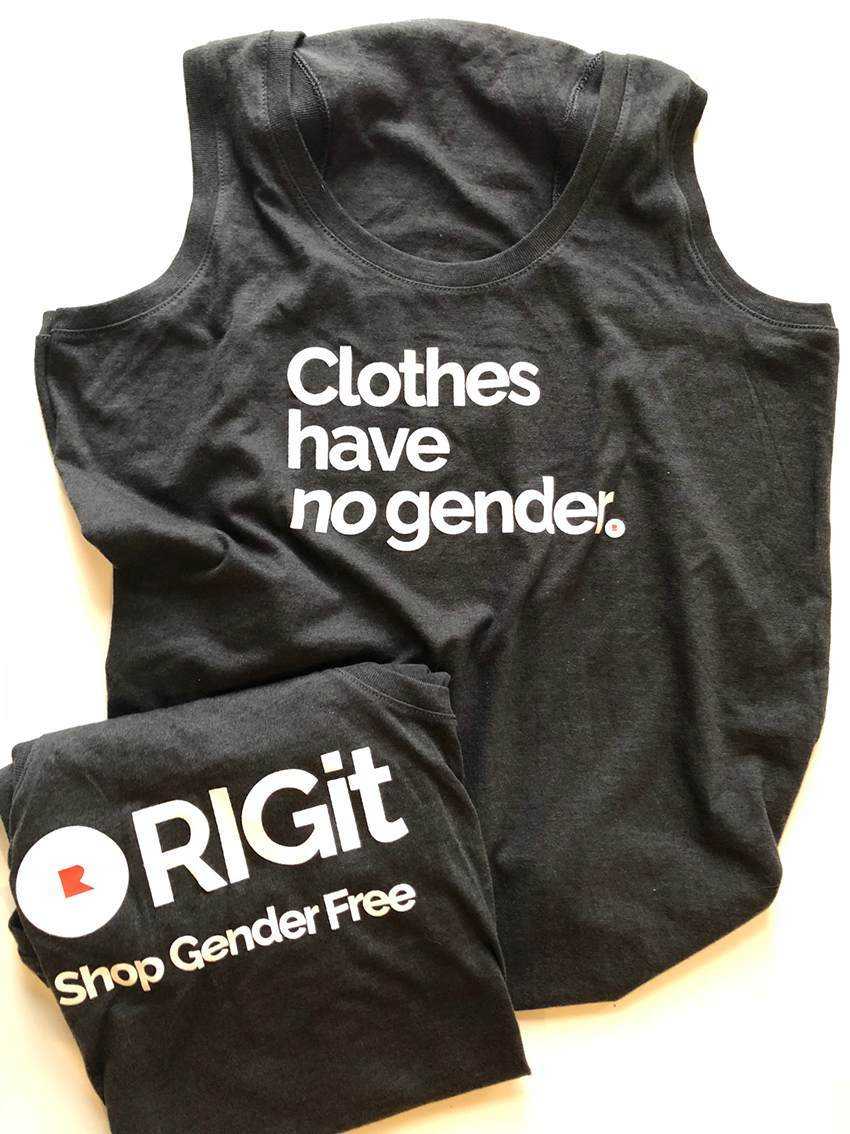
Photo: Courtesy of RIGit.
VA: Your app is available for now on the US Apple store only; are you planning to make it accessible worldwide?
AM: The reason why we haven’t gone outside of the US yet is because our official launch was in July and we wanted to start with the US market. The brands we work with are all currently US-based, but we have a list of many brands that are based outside the US that we want to start working with. Working with brands outside the US is where we’re going to be very soon but we needed to launch locally first.
VA: Who are your customers for now?
AB: Well, what makes me the happiest is when we get orders from small towns in the middle of our country where we know that people don’t have the option to walk into a shop and really be themselves, or cannot have access to certain types of clothes, because there’re not in New York City, they’re not in San Francisco. Our customers are from all over the country, they started out heavier on the East Coast of New York, but we have customers from Tennessee, South Carolina and states and towns in which there clearly is a need. So any time we get an order from some small towns that I’ve never heard of, it brings tears to my eyes, I get really emotional about it (laughs). We just ran a three question survey of everybody that’s downloading the app so far, just trying to always improve it, and so many people wrote in the comments field that they’re so grateful that the app exists. That was the goal, so it feels wonderful.
VA: What are your best sellers?
AB: We sell this button jacket from a company called ‘Brooklyn Cloth’ that has done really well on their take up on a much more expensive jacket sold around $49. This is a funny story too. When we first started the app, April and I talked, asking ourselves whether we would ever be designing our own line and she said ‘No way, no way, no way, we will ever design our own clothes’; we don’t come from a fashion background. But we organized an event at the New York Pride, we had some t-shirts made up that just say, ‘Clothes have no gender’, which is our model, just for us to wear to hand out some stuff at the Pride, as we thought that would be a great way to promote the app. And we were overwhelmed with people asking to buy the shirt off of our backs, so I convinced April that maybe we could come up with our own very small line of ‘Clothes have no gender’ t-shirts, tanks and hoodies. We are strictly an app, there’s a local store in Brooklyn where we are based that loved it and they’re actually selling our ‘Clothes have no gender’ items in the store; that’s been very popular.
VA: This is definitely about recalling one’s identity, right?
AM: Exactly, yes. I think that more and more young generations, millennials, younger generations, like Amy’s daughter who is part of generation Z, and you increasingly see in that age group that it’s not about sexuality; gender is totally a different conversation than sexuality for this generation. And we wanted to create a place where you can identify as a woman, a man, non-binary, any sort of gender, category or non-gender category, where you can just be you and shop on the app. And that’s why I think the platform and the way we’re trying to create this indicates that gender shouldn’t be even a consideration when you’re shopping because it’s just really about what fits you and what makes you feel good when you wake up in the morning, when you wear it. I didn’t always think about dressing the way I do, especially when I was a lot younger, but there are days when I wake up and I feel like I just want to dress in a homeless chic style (laughs). And I get to Amy’s work and Amy would be like, “Homeless chic today!?” (laughs), and there are other days when I will be in a button-down with a tie, a sweater or a blazer; it’s just because I felt that way when I woke up that day. And I think that’s what we are trying to create, if you want to wear a dress one day, you want to wear a suit another day, just do it and let people see you, experience you in the fullest, most transparent way you can be.
AB: I just add on to that, a sweater is just a sweater; once you put it on your body and you make it yourself, you make it about your style and how you’re presenting yourself, that’s what we’re doing. We’re saying, ‘Your clothes are just articles of clothing, do with them what you want to express yourself’. Be you.
...let people see you, experience you in the fullest, most transparent way you can be``.

